


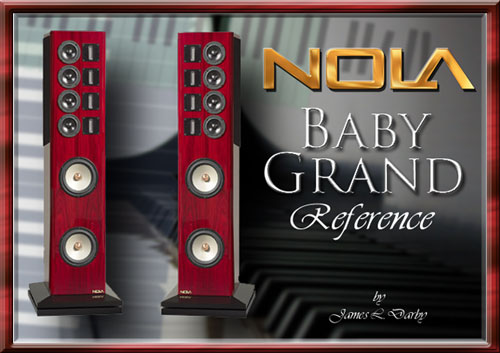
NOLA BABY GRAND REFERENCE SPEAKER
PRICE:$55,000 per pair
Review by
James L. Darby
The Made in the USA (New York) Nola Baby Grand Reference is a scaled-down two-tower version of their top of the line $145,000, four-tower Nola Grand Reference. The Baby Grand uses the same technology as the flagship as well as the same transducers. A pair of Baby Grand towers employs four 9-inch magnesium woofers, eight 4½-inch open baffle dipole midranges with alnico magnets, and eight 4-inch true ribbon tweeters with neodymium magnets. The drivers are arrayed in a unique mirror-imaged, short line source, open-baffle array, meaning they are not enclosed in a box or any cabinetry, but are instead mounted in free space so that enclosure coloration throughout the middle and high frequencies is non-existent.
The Baby Grand comes with a ball-bearing speaker isolation base to free it from the sound of coloration due to floor vibrations.
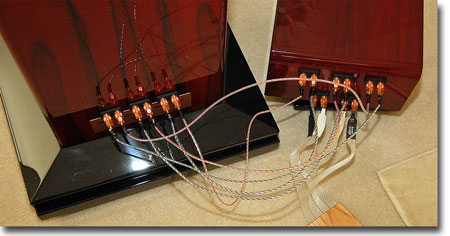 The
3 ½-way passive Xtreme Crossovers are housed in an external unit to
further free the loudspeaker from coloration due to crossover component
vibration. The Xtreme Crossover utilizes state of the art passive
components as are used in the Nola Grand Reference. The Xtreme
Crossover is bi-wired to the amplifier and is connected to the speaker
via the supplied Nordost Valhalla mono-filament jumpers.
The
3 ½-way passive Xtreme Crossovers are housed in an external unit to
further free the loudspeaker from coloration due to crossover component
vibration. The Xtreme Crossover utilizes state of the art passive
components as are used in the Nola Grand Reference. The Xtreme
Crossover is bi-wired to the amplifier and is connected to the speaker
via the supplied Nordost Valhalla mono-filament jumpers.
The units supplied to us came in a stunningly gorgeous rosewood finish
with many coats of clear lacquer that would be the envy of any Steinway
concert grand piano. Pictures just cannot capture how these speakers
appear to the eye. They are striking and seem to glow as if they came
with their own special external lighting system. We have never seen any
speaker at any price that has a real wood finish as spectacular as
these. That quality hand-made craftsmanship and extreme attention to
detail is evident throughout the design and structure.
As large as they are and with as many
drivers as they employ, the Baby Grands maintain a very efficient 89 db
rating that, if anything, is conservative as we will see later.
At 62” in height, the twin towers are over five feet tall. Published specs claim the frequency response goes all the way from 20 cycles up to 45 kHz on top. Each speaker weighs about 150 pounds, not including the external crossover boxes.
When Carl Marchisotto, the speaker’s designer, offered us the world’s
first review of his new Baby, he said he would fly down to help set
them up in the listening room. Stereomojo, unlike any other audio
review publication, has a written policy that prohibits any company
representative from participating in the initial setup for a review
because we believe it gives an unfair advantage to the product. There
is one exception to this stringent rule and that is that if it is done
for any of us, it must also be offered to the public. No special
attention or tweaking unless it is provided to a retail customer. In
other words, do unto us only what you do unto everyone else! In this
case, Carl said that he has and will come to a Baby Grand (or Nola
Grand Reference) purchaser’s home to do the same setup he would do for
us if requested. He stipulated that he would only do that for his two
top models and not his other models. And now that is in writing. We
should note that we have reviewed two of his other models and Carl did
not participate in the setup or visit our homes. Full disclosure.
We also believe that fairness works
both ways, so we do allow companies to send along equipment they
believe allows their product to exhibit their best performance. For
instance, if a speaker maker sends us speakers that are very
inefficient and require high power to drive them adequately, they can
provide higher-powered amps to be used in the review. Cable matching is
an important issue, so we also allow them to send cables of their
choice if they wish. In all cases, we again fully disclose those
factors.
At audio shows, it is very common practice for cable makers to loan
their products to other companies to use in the demo systems as a way
to promote them. In this case, Nordost provided Nola with a full set of
their flagship Odin cables: everything from power cables to
interconnects and speaker cables. As such, they were sent along with
the speakers and were used as part of the review. In fact, the review
samples were the very same ones used in Denver at the Rocky Mountain
Audio Fest.
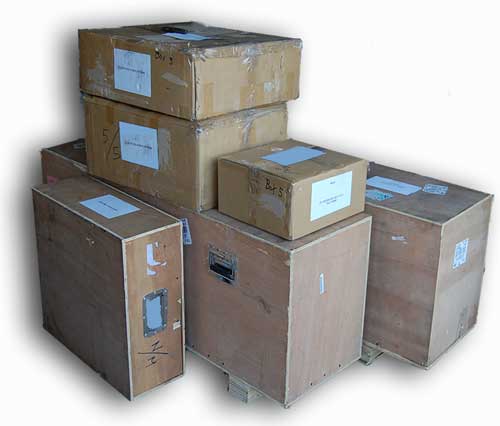
I have to admit that I was glad Carl, along with his wife Marilyn, flew down to help set up the system because it arrived in 6 different boxes and wooden crates. Heavy boxes and crates. Obviously, installation is at least a two-man job. In addition, because the system is rather complex, knowledgeable assistance is very desirable. Having the guy that designed the speakers from scratch there when you set them up is a huge advantage.
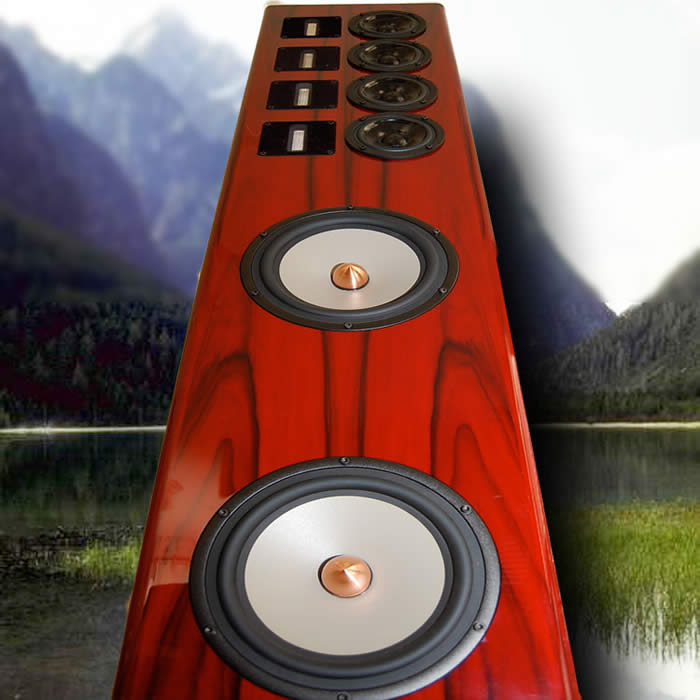
CARL MARCHISOTTO IS AN ISOLATIONIST
If there is one thing I have learned over the years that is more than a
little surprising, it is how deleterious vibration and resonance are to
sound quality. For example, just the act of placing a component on my
Stillpoints equipment rack can make a big difference in the sound
quality. Its main purpose is to minimize or eliminate ground and
airborne vibration by isolating the components from it. It works. Of
course, similar principles are used in turntable design and
construction as well as amplifier design. It is clear that vibration
and resonance are villains in the quest for the best sound and no one
believes that more than Carl Marchisotto.

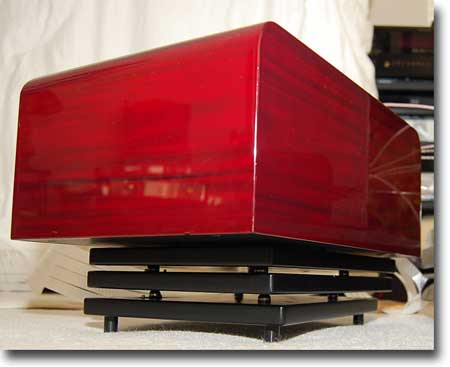
The beautifully
beveled piano black bases of these speakers are not just there for good
looks, they are actually three way systems in themselves. They start
with the four massive spikes that screw into the bottom platform. That
platform has four metal cup-like devices on top in which four solid
steel ball bearings are placed. The cups are a little larger than the
bearings so there is a bit of free travel allowed. The fourth implant
is different than the others; it has a channel in which the bearing
resides that is purposely oriented from the front of the speaker to the
back. “That’s the way sound travels with these speakers,” Carl told me,
so the bearing works to isolate sound waves in that direction.
Another platform that attaches to the bottom of the tower has similar
corresponding devices that when put in place atop the bottom platform,
allows the speakers to float on only the bearings. Carl told me that
over many years he has experimented with many different ways to isolate
speakers and this by far sounds the best, as well as making the
behemoths very stable.
“No matter what you do, a speaker cabinet is going to vibrate
internally, that’s why it is a very bad place to mount crossovers which
are very susceptible to vibration. That’s the reason I build separate
boxes for the passive crossovers that are placed outside the speakers,”
Carl explained. The small boxes also have the same brilliantly polished
rosewood 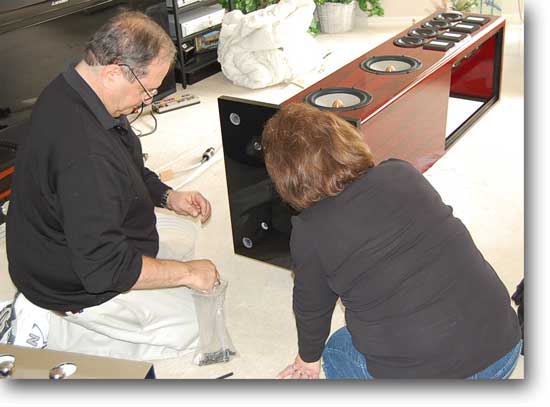 finish
as the towers. They also employ the same type platform isolation
scheme. Oddly to me, instead of two platforms like the speakers, there
are three levels of them under each crossover box. When I asked him why
that was, he matter-of-factly replied, “Because they sound better that
way.” See what I mean about details? Can’t argue with that. Of course,
those platforms also come with their own set of spikes.
finish
as the towers. They also employ the same type platform isolation
scheme. Oddly to me, instead of two platforms like the speakers, there
are three levels of them under each crossover box. When I asked him why
that was, he matter-of-factly replied, “Because they sound better that
way.” See what I mean about details? Can’t argue with that. Of course,
those platforms also come with their own set of spikes.
It must be admitted
that I expected Carl to do a lot of futzing around once the speakers
were in place; moving them back and forth while music was playing,
toeing them in and out – all the things I usually do to achieve the
best placement. Huh-uh. When Carl first entered the listening room
before we even unpacked anything, he took a look around for a moment,
then sat in the listening chair for no more than five minutes, just
surveying the room. You could almost hear the gears turning in his
mind. Then he just got up, retrieved the speaker bases and put them
down where he had mentally calculated they should be. Once the towers
were erected, he measured the distance of each from the back wall and
that was it. He never touched the speakers from that point.
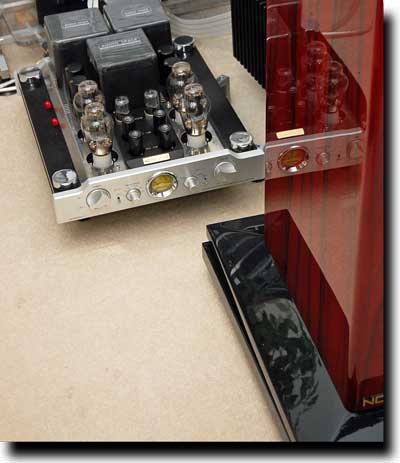
We hooked the Baby Grands up to my Audio Space Reference 3.1 tube integrated amp which employs 300B's to produce its 20 wpc. I had intended to use my 400 wpc Halcro power amp with the amazing Doge 8 tube preamp using balanced XLRs, but Carl would have no part of the Halcro because it is a Class D switching amp. “I don’t like the way they (Class D) sound,” he stated again matter-of-factly. He is really not too fond of most solid state electronics. He uses Antique Sound Lab Hurricane tube amps at home, he revealed.
He had brought a bunch of CDs with him, but the first one he played was the soundtrack from “The Pirates of the Caribbean – Dead Man’s Chest”, a Hans Zimmer scorcher I hadn’t 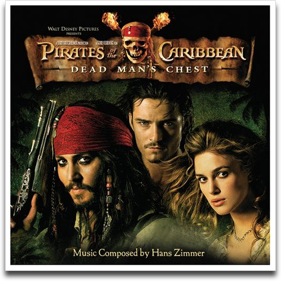 previously
heard. Having previously talked to Carl about music at length in the
past, I knew he was fond of classic jazz in particular. Since Carl
himself is a pianist, he especially likes recordings by people like
Ahmad Jamal, so I was surprised he put on a recent movie soundtrack
that was not jazz in the least. “This will really loosen them up and
get them cooking,” he smiled as I handed him the remote.
previously
heard. Having previously talked to Carl about music at length in the
past, I knew he was fond of classic jazz in particular. Since Carl
himself is a pianist, he especially likes recordings by people like
Ahmad Jamal, so I was surprised he put on a recent movie soundtrack
that was not jazz in the least. “This will really loosen them up and
get them cooking,” he smiled as I handed him the remote.
The track “Jack Sparrow”
starts out innocently enough with a quickly bowed bass viol figure in ¾
time before a rather lilting cello solo takes center stage. Those bass
fiddles had an extremely texture-rich growl that was amazing to hear –
and they were placed far behind and to the right of the speakers
against the back wall - deep and rich and obviously
rather close mic’d. The cello as well had an extremely detailed string sound that was full of realistic overtones. The resonant, woody body of both instruments was easily discerned. More strings enter followed by some low brass before the tempo changes to a much faster half-time feel and a new 4/4 time signature. Things continue to ebb and flow but build in intensity until it sounds more like something from Phantom of the Opera or the latest Batman flick. By about 4 minutes, all hell starts to break loose with the whole orchestra in a dark ominous chorus with sharply punctuated counter themes and rhythmic riffs. At about 5 minutes, a minute from the end, even a spooky choir lets loose a la Carmina Burana, joining those demonic basses that then sounded as if their players were sawing their instruments in half in the low registers. Things had gotten very furious, complex and very LOUD. We were easily listening to levels around 85 to 90 db when it occurred to me that all this was being powered by only 20 watts per side!
Yes, there was some strain and soft clipping evident, but the amp
hadn’t even warmed up yet. I later decided that there was actually some
distortion added to the track to make it sound even more massive and
loud, much like adding fuzz to an electric guitar for the same effect.
Regardless, it was clear that these speakers were very fast, no doubt
aided by the Odins, but to capture the leading edges of all those
massive strings, horns and even tympani was impressive to say the
least. And the Baby Grands’ ability to keep track of the many layers
and locations within the huge soundstage was even more staggering.
Probably most impactful though was the deep bass. Even in the most
intricate, complex and thunderous passages, the raw, glowering
character as well as their location was never compromised. And yeah, we
all could feel them shaking our seats. But more than that, the overall
sense that we were listening to a real, live performance was
overwhelming. That’s what I heard with the cheapest Nola I reviewed a
while back. That’s what our Clark Hertz observed when he reviewed the
Nola Viper Reference IIs he owns and still loves so much. That’s what
we heard at the Rocky Mountain show and led us to Award the Baby
Grand’s with our Best Sound At Show. Stereomojo wasn’t the only one.
(We were just the first to get a review pair, hehe!)
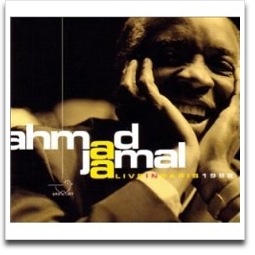
Carl eventually brought out his vintage Ahmad Jamal “Live in Paris”. You simply have not experienced a live recording until you have heard it through an open baffle speaker system, and Marchisotto’s Nolas in particular. If you prize the sense of “being there” that we all talk about incessantly, nothing else does it like these. If you like your sound uncolored by a pair of speakers, most of the sound produced by the Nola’s comes from drivers that have no enclosure to color them. No boxes to resonate and smear or veil. I might mention that grills do come with these, but Carl didn’t even consider unpacking them. No matter, the Baby Grands are still gorgeous au naturel.
The Baby Grands do not
discriminate among music genres or large vs. small ensembles. All are
reproduced accurately and to scale. Want to hear the intimacy of Stacey
Kent or Jennifer Wells or even Shirley Horn in her later years? You’ll
feel like a voyeur peeking in their performances.
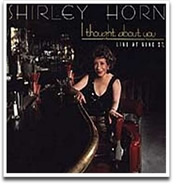
Carl played the Shirley Horn for us (I Thought About You – Polygram) and it (and she) was amazing. She was in her 70's when she recorded this, so her phrases were a bit shorter than in her early years, but oh how she delivered them. You would never guess her age, and I think I actually prefer her later recordings to her earlier ones. There is more substance and a little less emphasis on style, particulalry in the ballads, but it is evident that she could still swing, too. We lost Ms. Horn in 2002.
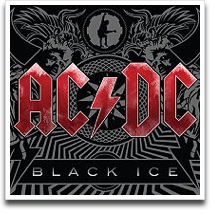
I did not have the Baby Grands for long; they had an appointment at CES that cut my time with them short. I did have an opportunity to share them with some friends and family who vary from avid audiophiles to those who could not care or know less about audio gear. The one overriding comment always elicited was “Wow! The music sounds so REAL!” I could not say it better in a thousand words. They were also amazed that no matter where they sat, even off to the sides of the speakers, a stereo image was heard with detail and depth. If you listen with a partner, these will be perfect. There was never a sense of etching or a single note surrounded by electronic or artificial artifacts. They never glared or beamed whether the music being played was AC/DC’s latest “Black Ice” on vinyl (oh the Baby Grand’s adore vinyl!) or Handel’s Messiah on Linn – a must since I had these leading up to the Christmas Holidays. (our review of the Black Ice LP is coming soon to our Music Reviews section))

There is nothing "baby" about the Baby Grand's. Perhaps they might be better dubbed the Concert Grands,
because the sound is huge an uncannily concert-like. These do not
suffer from the very contagious "Hi-Fi-itis" that plagues most
speakers, even in this price range. If there is a more natural sounding
speaker system out there, please let me know. I have heard thousands
over the years and I can't think of any. There was never a sense of any
sound coming from the towers. Utterly invisible. And they will play
very loud without a sense of strain, something I confirmed when I
inserted the Halcro with its extra 380 wpc. This was, of course, after
Carl and Marilyn were long safely back in New York (where he hand makes
the speakers) and out of hearing range! I honestly think Carl would not
have been too offended by the Class D sound since it was being fed by a
tube DAC (Xindak) and the Doge tube preamp. There was even more detail
and speed, but some of the fullness was lost to a thinner presentation,
but lordy did that “Pirates” track take and absolutely roar.
Perhaps the best thing
is that one does not have to spend $55,000 or have a big room to hear
the basic characteristics herein described of the Baby Grands. The
Babys just expound and expand on the “liveness” of the smaller and less
expensive Nola models. However, even at 55 grand, I consider the Baby
Grands at least a real value if not a bargain in a world where there
are many speakers we have heard that cost much more. For instance, I
would take these over the $300,000 Martin Coltranes I’ve heard at
several audio shows. Even the big Wilsons don’t give you the same
experience as the Baby Grand's.

The Nola Baby Grands
are an outstanding speaker that those who seek and cherish a sound
other than that produced by most speakers, which may have many of the
audiophile attributes everyone spews out, but do not reproduce the wide
open, spacious and unboxed sound of the Nolas, will find very
satisfying. They have many of the superior attributes of electrostats,
but without their attendant limitations.
At $55,000 the pair, including the outboard crossovers, the extraordinary steps taken in implementation, such as the extreme attention paid to reducing vibration through isolation, pays dividends in their über clarity and lack of the least amount of distortion at even the micro level of not only the speakers but the crossovers as well. Those crossovers are very important to the Baby Grands’ sound and should not be underestimated. Everyone should know that even great and costly drivers in a well-designed enclosure can be severely compromised by a poor or even average crossover. That is why it has been said that the best crossover is none at all – and some speakers employ that philosophy, but that creates a whole new set of problems. Carl’s passive design with a 2.5 way split using Nordost Valhalla wire may be the best available. Put them atop a triple isolation platform and I have to say I don’t know of any others that can compete. The super strong (and expensive) alnico magnets Carl uses in his drivers cannot be overlooked, either. They give the speakers the otherworldly sense of speed and control not found by lesser products.
Downsides? You need a rather large room – they need space. Carl placed them further back than my usual placement so they need some distance between them and the listener – or listeners. I think they sound best away from walls, but Carl would argue that point and he is the expert. Once you get these in place, their weight and platform technology preclude you from moving them around, so get it right the first time. Of course, if you purchase these, Carl will come and help you set ‘em up. They do take up extra floor space since the outboard crossovers are present. If you don’t like glossy rosewood or piano black, those are the only two standard finishes. If you want anything else, you’d have to ask Carl or Marilyn. Oh yeah. If you want to keep the boxes and crates, you’ll need some storage space.
Even at their price point, bestowing our Maximum Mojo Award was easy. They are also a leading contender for our annual Products of the Year award for 2008.
NEWS FLASH!Nola is debuting a new small speaker this week at CES! Carl revealed, "The new speaker is the Micro Grand Reference -stand mount. No ordinary stand mount-this is to provide the same musical experience as our Baby Grand - but in a much smaller venue. 4 driver, 3 1/2 way crossover, magnesium woofers, open baffle mid, open baffle true ribbon tweeter, Isolation platfrorm base, etc." Hmmm. A baby, Baby Grand!
